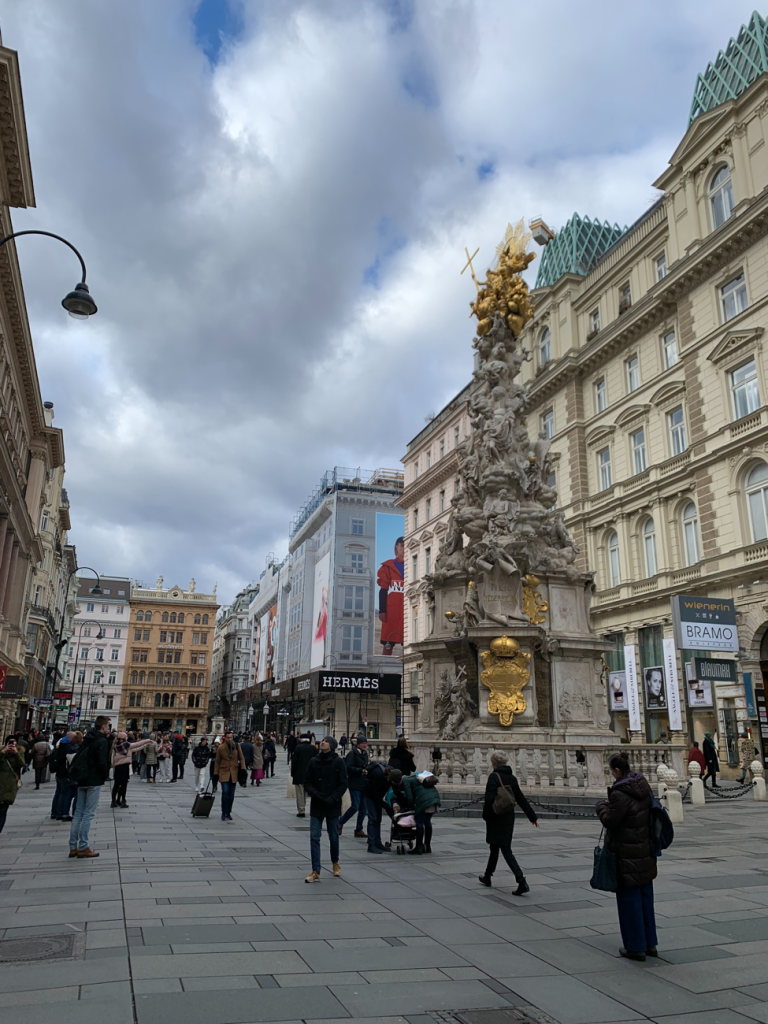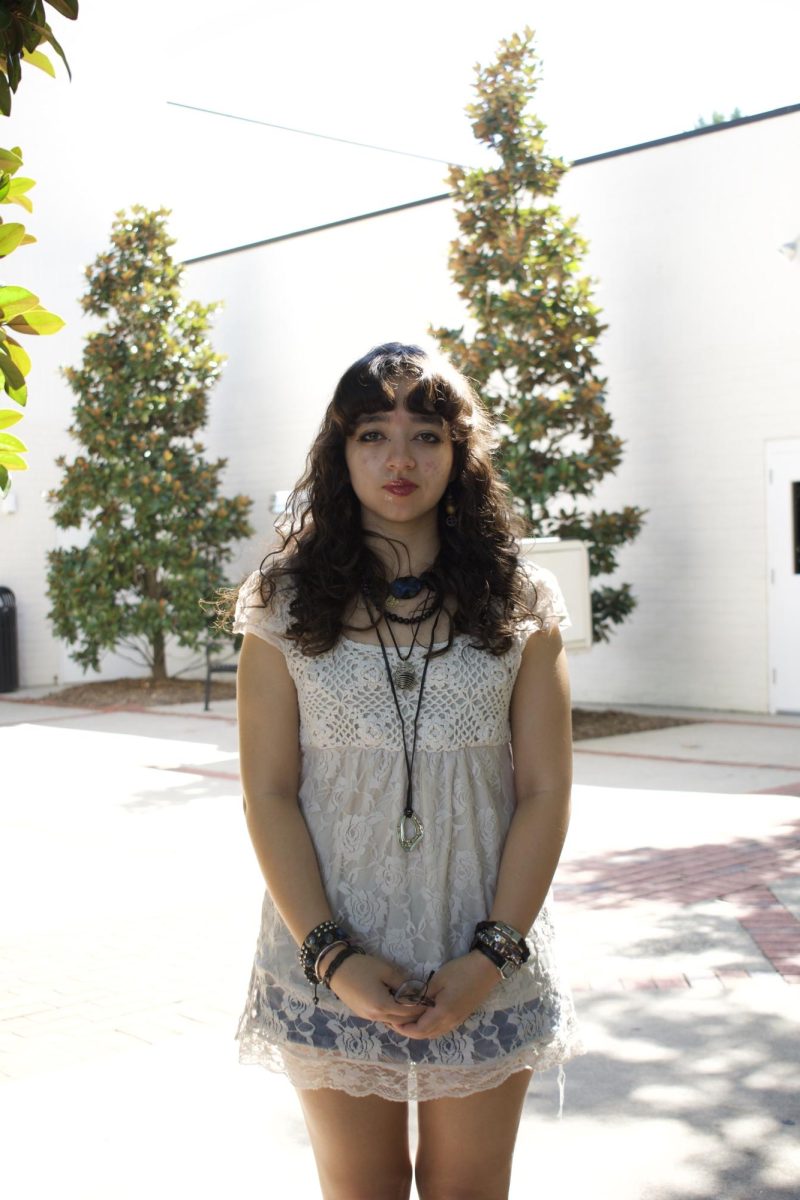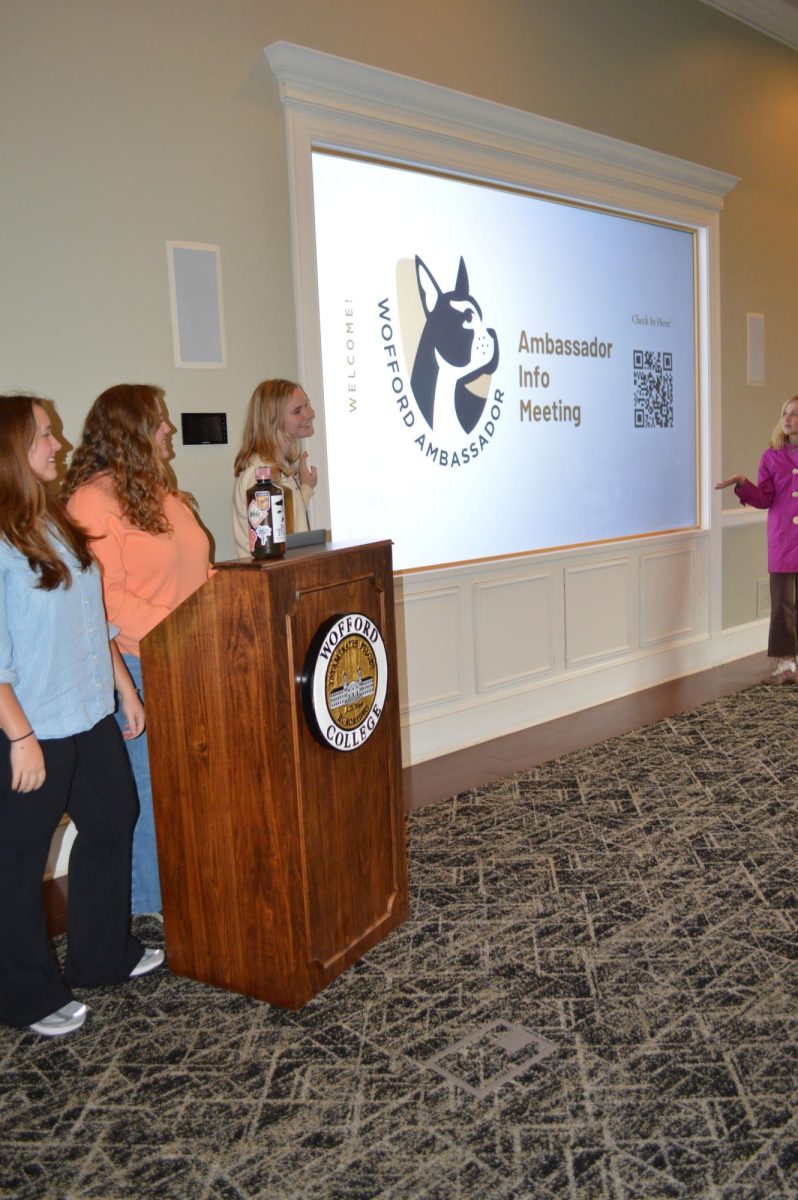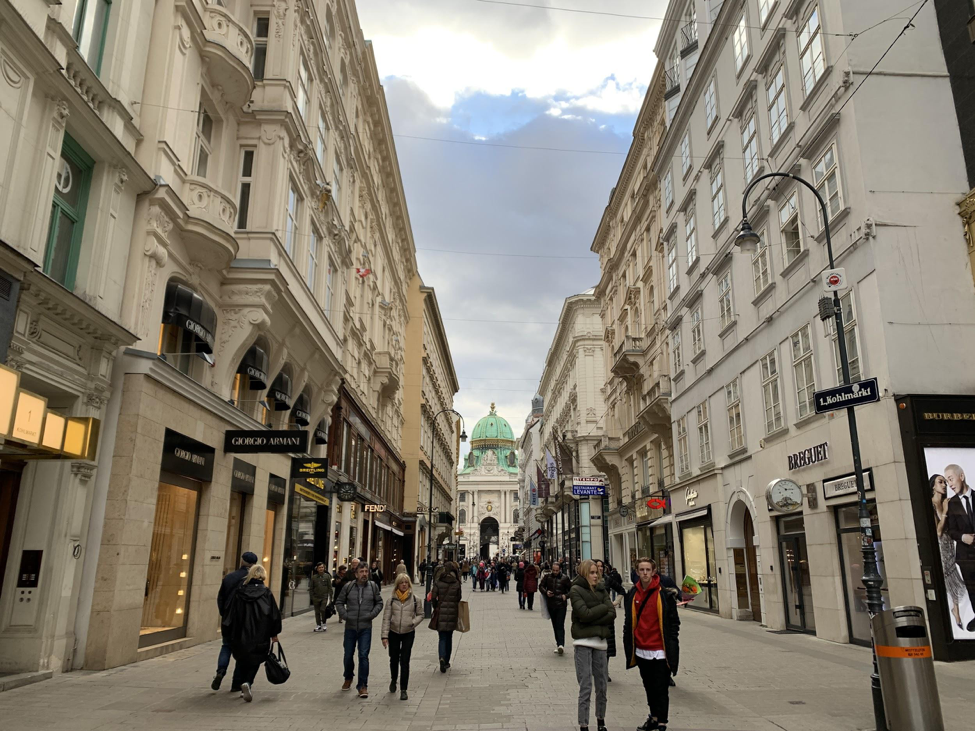Students up their style game abroad
By: Jacob Hollifield, foreign correspondent
Caption: A section of Vienna’s famous shopping street, The Kärntner Strasse.
Bond Street in London. The Champs-Élysées Paris. The Kärntner Strasse in Vienna. Via Montenapoleone in Milan. What do each of these streets have in common? They are the notable fashion streets of four major European cities; and what do these cities have in common? They are often home to a Terrier or two for the semester.
At Wofford, it can sometimes be difficult to decipher between who is going to the gym, to bed or to class based on what they are wearing. In Europe, as those who have traveled have probably realized, people dress noticeably more professionally and ‘athleisure’ is virtually nonexistent.
Milan, Italy has held the title “the fashion capital of the world” since the sixteenth century, and today runway styles that originate in the fashion houses of the city filter out onto its streets, its neighboring countries and continents around the world. While studying abroad, it’s already become apparent to me that Terriers tend to partake in the literally foreign concept of “dressing up” each day and make strides toward blending into the stylish streets for four months.

Ryan Fowler, ‘21, is studying Marketing & Management in Milan this semester and has also noticed a difference in the way that Europeans dress. The manner in which they choose to present themselves can make people living in Milan feel obligated to live up to a fashionable expectation. He said of one fashion staple that stuck out to him: “overcoats are very popular in Milan… I did end up buying an overcoat because they were so popular here.”
Fowler also picked up on another aspect of European style. He explained: “it seems as though Europeans have a smaller wardrobe, but the things they have are more expensive, very stylish and hold up to their value.” This is opposite to the consumption of popular fast fashion brands such as H&M, Zara or Forever 21.
Sandra Lopez, ‘21, recognized comparable trends and styles from another fashion capital in Europe: Paris. She said, “Europeans dress way better than Americans by a long shot… the men just know how to style things to make it look cleaner and it’s not the same Sperrys with khakis combo.”
Similarly to Fowler, Lopez found that people have fewer, more expensive clothes in Paris, saying, “people here put in effort and the ones that dress minimalistic almost always have designer articles that make the outfit different…I also think that coming back to the states I will have a whole new wardrobe, which is for the better.”
While Sean Denis, ‘21, may not be in a city that is considered a fashion capital of the world, Alicante, Spain is a city known for its production of leather goods. When asked if there was anything noticeably different between the wardrobe of an average American his age and a Spainard’s, he said, “ The outerwear, leather jackets and wool coats, are different. Although there is a lack of khaki here.” Denis commented on the number of suits that he sees and concluded that he thinks Europeans dress better than Americans because of this.
So what is it that makes Europeans not only dress nicer but also want to dress nicer? Agnes Adensamer, an IES German teacher and Vienna native said–with shoulders back and donning a blouse, blazer and knee-high black leather boots, that she would never wear athletic clothes out even if she was simply running errands. Adensamer even referenced a quote by the late creative director of Chanel, Karl Lagerfeld, reiterating that “sweatpants are a sign of defeat. You lost control of your life so you bought some sweatpants.”
When asked about American athleisure and its roots, Adensamer referred to the U.S. having a much more prominent sports culture than European countries. She said that a baseball hat, something that was designed for a specific sport, has filtered into daily life, as well as become a form of social capital. Not only are these clothes comfortable, they also allude to an active lifestyle.
“In Vienna,” Adensamer says, “clothes belong to society.” In other words, what you wear says who you are; are you old money? New money? Working class? White collar? Blue collar? Where in the U.S. clothes may represent activity, Adensamer believes European clothes have the possibility to communicate education, employment and wealth.































